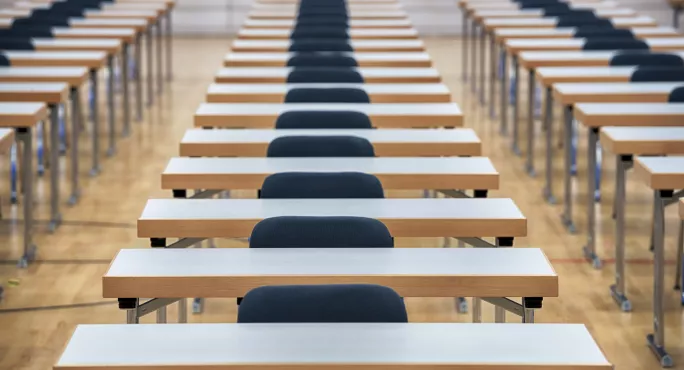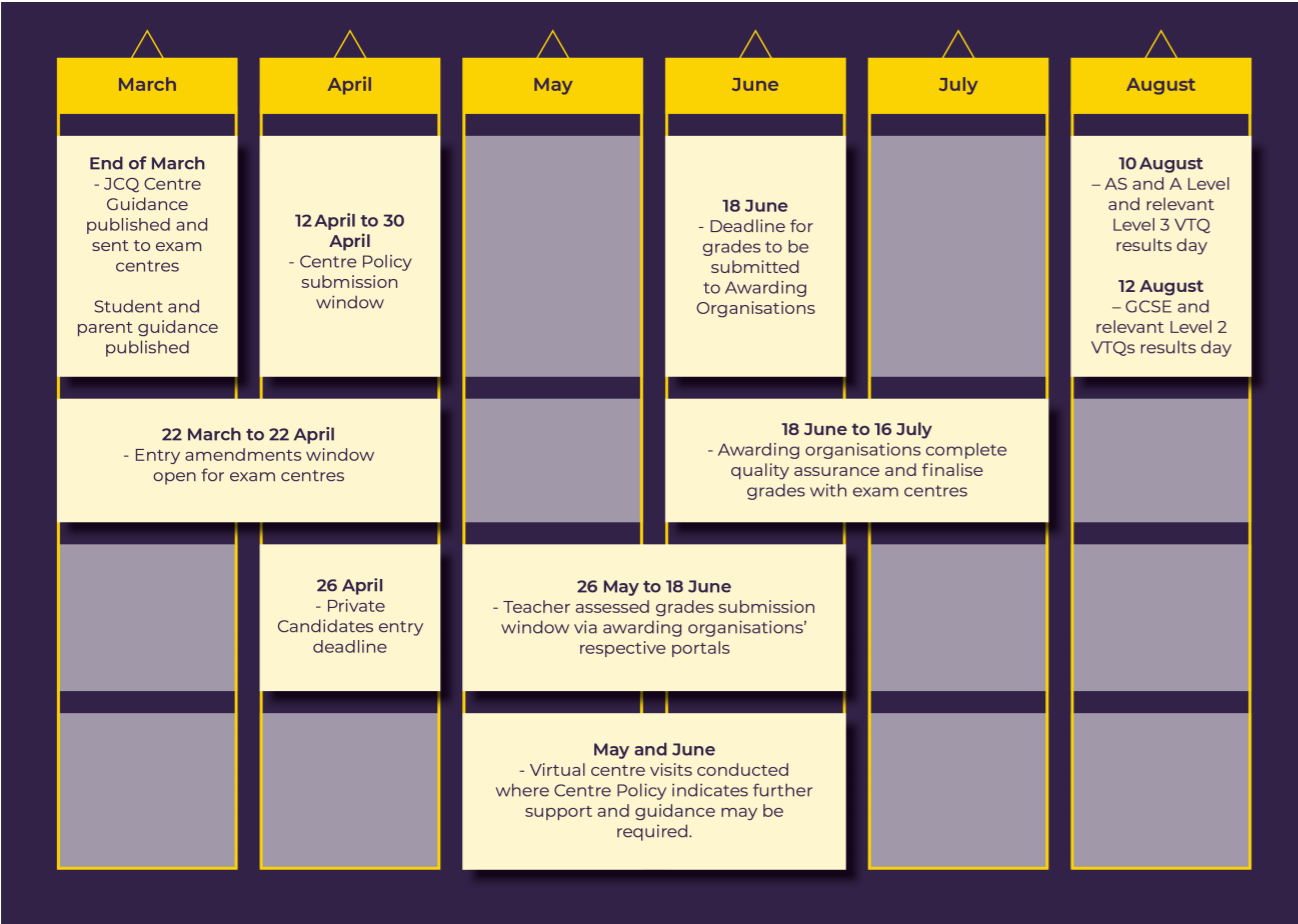- Home
- Teaching & Learning
- Secondary
- GCSEs 2021: 10 key points in new grading guidance
GCSEs 2021: 10 key points in new grading guidance

Today, the Joint Council for Qualifications published long-awaited guidance from exam boards on how teachers should award GCSE and A-level grades this year.
GCSEs 2021: Teachers can base grades on oral assessment
GCSEs 2021: How to make grading work
GCSEs 2021: Exam board grading guidance finally out
Here are some of the key points:
1. Your school could be checked (virtually) by an exam board it doesn’t use
Exam boards may arrange virtual visits with schools in May and June where they have questions about their submitted policy for awarding grades.
The visits are meant “to be supportive with the aim of assisting [schools] to provide valid teacher assessed grades and to ensure the best possible systems are in place,” the guidance says, adding they will probably take place over Microsoft Teams or Zoom.
But the visits could be carried out by exam boards that the school does not have entries for.
“Normally, [schools] will participate in one visit with a single awarding organisation,” the guidance says.
“The purpose of this is to have a single point of contact and to ease the burden on [schools]. This may mean a centre’s visit is hosted by an awarding organisation with which they do not have summer 2021 entries.”
2. Heads will compare results with previous years
Schools must draw up a centre policy for submitting results.
This policy should outline how results from previous cohorts in schools will be used to draw comparisons with teacher-assessed grades in 2021.
“After the grading judgements have been made, [schools] should compare the grades for this year’s cohort to cohorts from previous years when exams have taken place (2017 to 2019),” the guidance notes.
And it adds that where there is “significant divergence” from the grading patterns of previous years, heads should “prepare a succinct commentary which addresses this disparity and highlights the reasons for it”.
3. Oral assessment evidence could be used
“In some limited circumstances, where other evidence is not available or possible to create, an oral assessment may be an appropriate form of evidence,” the guidance says.
4. Teachers must be mindful of how ‘authentic’ student work is
When teachers evaluate evidence from students to use to support their GCSE or A-level grade, they need to consider how authentic the work is.
They should consider if the evidence is the student’s own work, whether it was taken under timed conditions, whether it was supervised, if students had the opportunity to redraft the work, as well as how much support was available when applying the mark scheme and if internal standardisation processes had been applied.
“While there is no one type of evidence that takes precedence, evidence gathered in conditions that enable confidence about the authenticity of the students’ work will give more confidence in the overall holistic judgement,” the guidance says.
“More recent evidence is likely to be more representative of student performance, although there may be exceptions.”
5. Students’ views about the assessments used must be documented
When establishing whether the proposed range of evidence to use as a basis for grades is appropriate for all students, schools must tell students what evidence will be used, “so that they have the opportunity to raise any genuine and valid concerns. It is recommended that any student’s views are recorded and documented along with reasons for the final decision”.
6. Schools should not look at their historic past performance before assigning grades
The guidance says that schools “must ensure that grade judgements have been recorded for students in the current assessments before considering historical records of mark data and grade distributions for students in previous assessments at the [school]”.
7. Schools need to compile evidence of past exam performance
Schools are are advised to compile “information on the grades awarded to students in past June series in which exams took place (2017 to 2019), where they can be confident that a consistent national standard was applied”.
They should not use data from 2020 where different standards were applicable.
This information should be compiled for each grade, for each subject and for the school as a whole, as it is “important to consider both subject and school level variation during the internal quality assurance review”.
“Prior to 2019, GCSE students may have received a mixture of A*-G and 9-1 grades. Where necessary, consider outcomes at the points of alignment between the two grade scales: 7/A, 4/C and 1/G when compiling historical data,” the guidance continues.
And when collating the information, schools should review data across multiple years even if they have changed awarding organisation in a subject.
Grades from international GCSEs (for example, in mathematics) should be included if a school offered such qualifications previously.
8. Disclosing mark schemes deliberately is malpractice
Exam boards will investigate credible allegations of malpractice, for example grades created for students “who have not been taught sufficient content to provide the basis for that grade”.
A teacher “deliberately providing inappropriate levels of support before or during an assessment, including deliberate disclosure of mark schemes and assessment materials, to support an inflated grade” would also be considered as malpractice.
9. The key dates are set out
Key dates were released for when grades must be submitted, including that the exam boards will release further assessment materials on 31 March.

10. Smaller departments can team up with neighbouring schools to compare grades
“In the case of small subject departments, heads of department may choose to collaborate with neighbouring centres for additional support,” the guidance says.
You need a Tes subscription to read this article
Subscribe now to read this article and get other subscriber-only content:
- Unlimited access to all Tes magazine content
- Exclusive subscriber-only stories
- Award-winning email newsletters
Already a subscriber? Log in
You need a subscription to read this article
Subscribe now to read this article and get other subscriber-only content, including:
- Unlimited access to all Tes magazine content
- Exclusive subscriber-only stories
- Award-winning email newsletters
topics in this article



